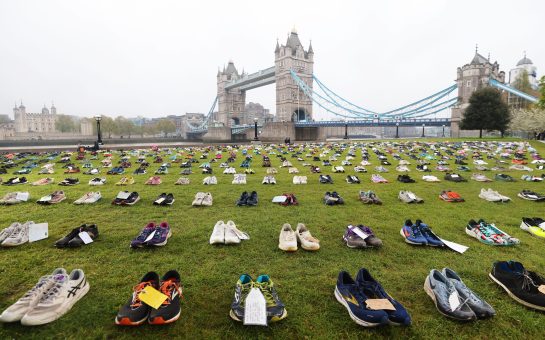A London-wide not-for-profit letting agency that won’t charge fees is one of the radical new ideas Sadiq Khan unveiled today to tackle the capital’s housing crisis, nine days after winning City Hall.
His former constituency Tooting has some of the fastest growing house prices in London and faces social cleansing as new generations of families can’t afford to buy in the area they grew up.
As a lifelong Tooting resident the new mayor joked that as the number of people in their 30s who live with their parents increases – the so-called boomerang generation – he worries about the prospects for his daughters, aged 14 and 16.
“I love them but at some stage they will have to move out,” he said. “I’m aware of the problems facing young people.
“Ten years ago bus drivers, nurses and junior journalists couldn’t afford to buy in London, now it’s company CEOs, junior doctors and senior reporters who can’t buy homes.”
He intends re-evaluate ‘affordable’ housing, promising half of publicly-funded new builds would be affordable – and for renters this means paying no more than a third of the average monthly salary in their area and rent increases not exceeding inflation.
“London has been hollowed out,” he said. “We want to make sure new homes go to Londoners and are on the local market for at least six months before overseas investors and foreign buyers can access them.
“A rent cap is off the table but we will implement a London living rent.”
Other schemes include rent to buy, which would require only a small deposit of a few thousand pounds compared to the average deposit of £91,000 currently needed in London, and affordable social rent.
It has been suggested that private developers will simply halt construction work until there is a change of administration but Mr Khan wants to make these companies more accountable.
Analysis of the viability of affordable homes in new builds is often outsourced from councils, who often have no ability to challenge developers reducing targets.
Developers who wish to build in London boroughs, as Islington has already introduced, must publish their viability reports and be held to public scrutiny. Refusal to do so will result in being refused planning permission.
Air quality was also high on the agenda as Mr Khan revealed he has recently been diagnosed with asthma.
Some of London’s poorest children breathe the most polluted air and City Hall this week published a previously suppressed 2013 report that revealed 433 primary schools are in areas where Nitrogen Dioxide exceeds European guidelines.
“Half of under 19-year-olds are breathing air that breaches European quality directives,” Mr Khan said.
Measures to make London a greener city that are being considered are banning HGVs in central London during rush hour, a move expected to be welcomed by cyclists, and increasing the number of clean buses and council vehicles.
Mr Khan also suggested expanding the low emission zone, a diesel scrappage scheme and making a ‘clean air corridor’ for electric vehicles.
Other ideas that lay stagnant during his predecessor’s tenure, including the proposed Croydon to Sutton tram link, are ‘back on track’, alongside short-term measures such as TfL taking control of commuter lines, to ease transport woes currently faced by south west Londoners.




